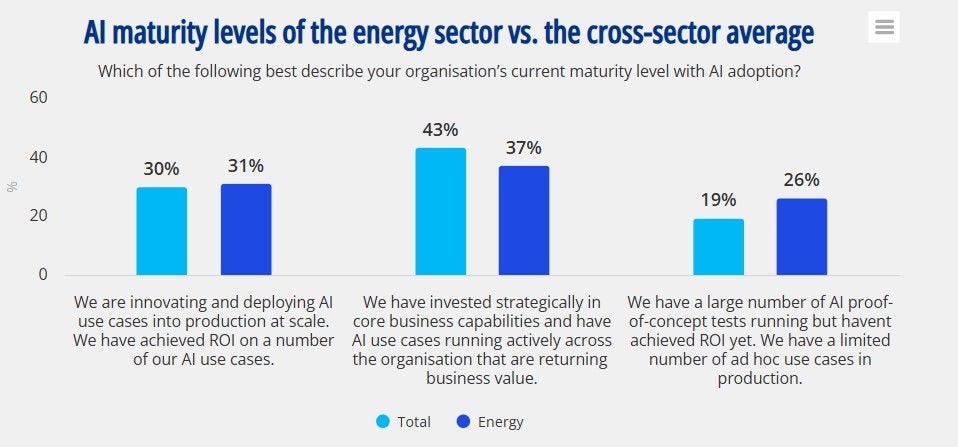Much done, more to do
Energy companies are already experimenting with AI use cases in a methodical way.
But a sizeable proportion are taking a cautious approach and are still at the proof-of-concept stage of AI experimentation, with data maturity gaps making it harder for the sector to prove the true value of this technology.
In every data management category measured in the research, the energy industry lags behind the cross-sector average on data maturity — especially regarding data interoperability, security and the extraction of meaningful insights.
There are reasons for optimism. For a start, the energy sector is skilled at getting financial value from cyber security.
The energy sector is also bolder than others on technology, and doesn’t let influences such as economic uncertainty, complex regulatory developments or market competitiveness dampen its confidence in exploring new technologies.
The report also finds that growing market competitiveness has dented the investment confidence of other sectors more than it has the energy industry.
But to successfully navigate what is a turbulent landscape with both confidence and clarity, energy executives must build resilience through targeted technology investment and innovation, it finds.
They must also build a strong data backbone. As the industry evolves, robust data infrastructure will be essential for evaluating the impact of new technologies.
They must mitigate technical debt too, addressing legacy systems and outdated technologies. Establishing structured plans to manage and reduce technical debt can help maintain scalability and interoperability while avoiding bottlenecks during digital transformation.









